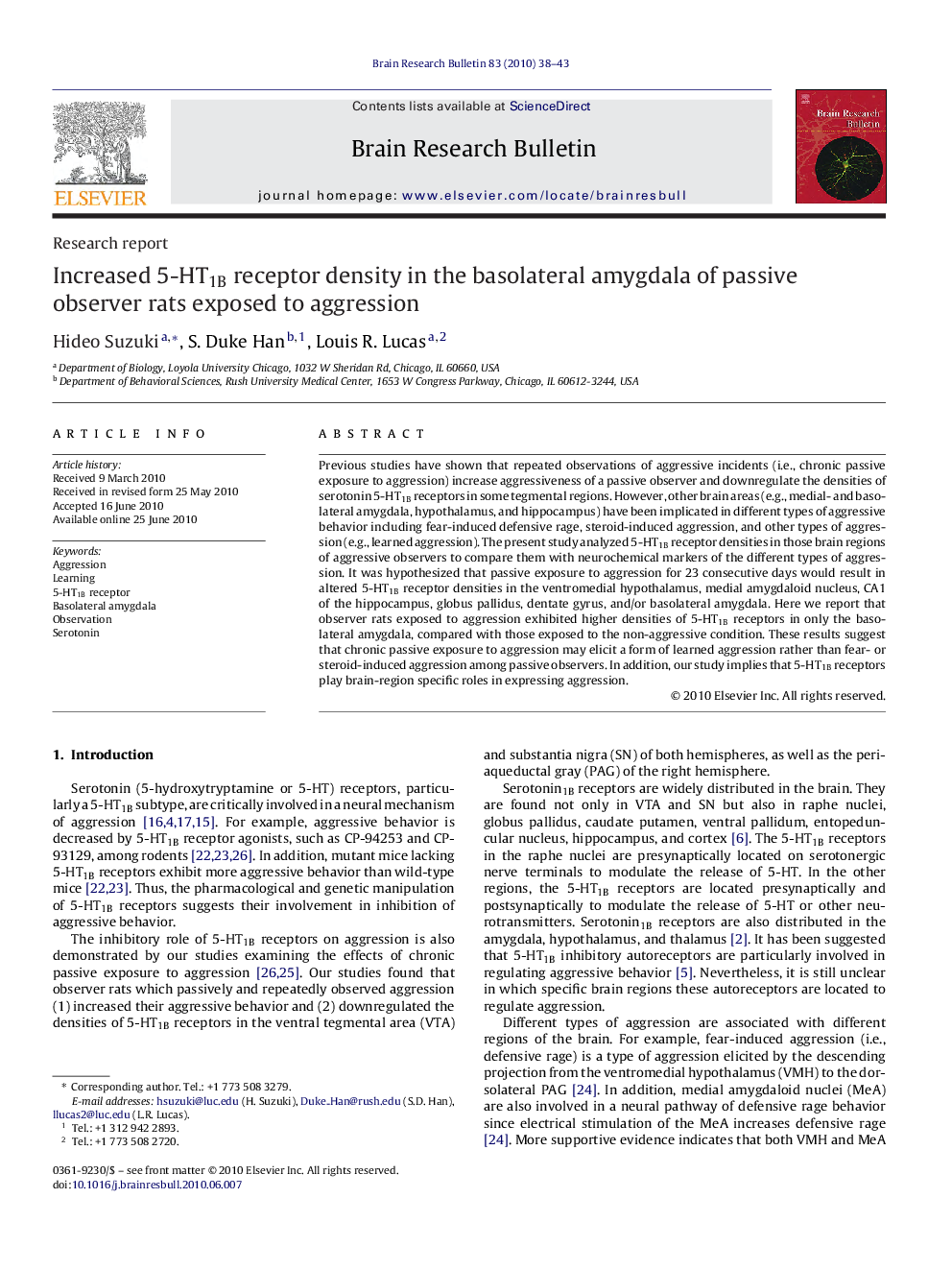| Article ID | Journal | Published Year | Pages | File Type |
|---|---|---|---|---|
| 4319289 | Brain Research Bulletin | 2010 | 6 Pages |
Previous studies have shown that repeated observations of aggressive incidents (i.e., chronic passive exposure to aggression) increase aggressiveness of a passive observer and downregulate the densities of serotonin 5-HT1B receptors in some tegmental regions. However, other brain areas (e.g., medial- and basolateral amygdala, hypothalamus, and hippocampus) have been implicated in different types of aggressive behavior including fear-induced defensive rage, steroid-induced aggression, and other types of aggression (e.g., learned aggression). The present study analyzed 5-HT1B receptor densities in those brain regions of aggressive observers to compare them with neurochemical markers of the different types of aggression. It was hypothesized that passive exposure to aggression for 23 consecutive days would result in altered 5-HT1B receptor densities in the ventromedial hypothalamus, medial amygdaloid nucleus, CA1 of the hippocampus, globus pallidus, dentate gyrus, and/or basolateral amygdala. Here we report that observer rats exposed to aggression exhibited higher densities of 5-HT1B receptors in only the basolateral amygdala, compared with those exposed to the non-aggressive condition. These results suggest that chronic passive exposure to aggression may elicit a form of learned aggression rather than fear- or steroid-induced aggression among passive observers. In addition, our study implies that 5-HT1B receptors play brain-region specific roles in expressing aggression.
